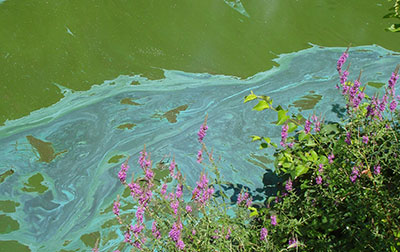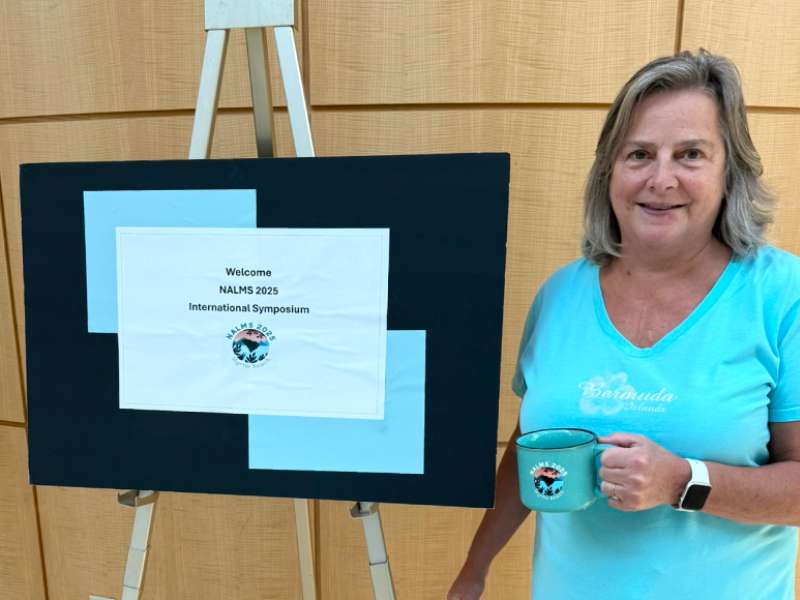
June 26, 2020| Community, Environment
By: Holly Odgers
The New Jersey Department of Environmental Protection (NJDEP) launched an Interactive Harmful Algal Bloom (HAB) Map to share the results of completed investigations of suspected HABs with the public. The map will also report any recommendations for public alerts or advisories.
Algal Blooms
 Most algal blooms observed in New Jersey’s waterways are harmless. They result from too many nutrients causing excessive blooms of naturally present algae. Cyanobacteria, also known as blue-green algae, can often be confused for typical algae blooms. Cyanobacteria are also naturally present in lakes and streams in low numbers. Under suitable environmental conditions – sunlight, high nutrients, warm temperatures, and calm water – dense cyanobacterial blooms, or Cyanobacterial Harmful Algal Blooms (HABs) can form. These blooms are usually a bright green, but can also appear as spilled paint, “pea soup,” or as having a thick coating or “mat” on the surface.
Most algal blooms observed in New Jersey’s waterways are harmless. They result from too many nutrients causing excessive blooms of naturally present algae. Cyanobacteria, also known as blue-green algae, can often be confused for typical algae blooms. Cyanobacteria are also naturally present in lakes and streams in low numbers. Under suitable environmental conditions – sunlight, high nutrients, warm temperatures, and calm water – dense cyanobacterial blooms, or Cyanobacterial Harmful Algal Blooms (HABs) can form. These blooms are usually a bright green, but can also appear as spilled paint, “pea soup,” or as having a thick coating or “mat” on the surface.
Cyanobacterial blooms do not always produce toxins, but when they do the blooms can pose a risk to people, pets, and wildlife if exposure occurs by ingestion, inhalation of contaminated water, or dermal contact. Rashes can occur when cyanobacteria cells come in contact with skin.
What to do if you suspect a HAB
If you observe what you think might be a HAB, a suspected Harmful Algal Bloom report can be submitted by smartphone or PC using the DEP HAB Interactive Map Reporting and Communication System.
The HAB System will be used to gather initial information such as location coordinates, photos, and known recreational activities. This information will be used to inform DEP to initiate appropriate response actions. Once the DEP completes the investigation of the suspected HAB, results and any recommendations for public alerts or advisories will be communicated through the Interactive Mapping and Reporting System. All information and HAB data will be accessible by clicking the location on the interactive map in the HAB System.
If a smartphone or computer is not available, reports may also be submitted to the DEP Hotline at 1-877-WARNDEP (927-6337). If reporting by phone, note the exact location of the suspected HAB along with any details (e.g., date/time, bloom appearance, and color, and if known, whether a swimming beach is nearby or whether the waterbody is a drinking water source like a reservoir).
After a suspected HAB is reported
Once a suspected algae bloom has been reported, an NJDEP investigation will take place, and then, using the HAB Interactive Map Reporting and Communication System, the public can view HAB testing data, local alert conditions, and other information about impacted water bodies.

November 14, 2025
Community, Environment

November 13, 2025
Environment, Events

November 13, 2025
People